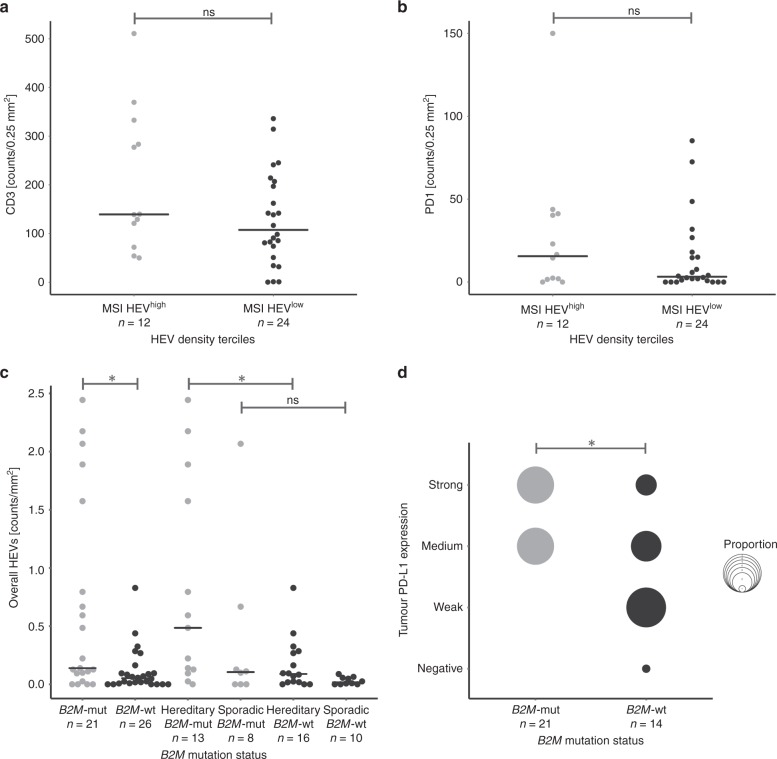Fig. 4.
Association of HEV densities with immune response and immune evasion markers in MSI CRCs. a Immune infiltration detected with CD3 marker compared in MSI tumours with high HEV densities (highest tercile) vs MSI CRCs with lower HEV densities (two lower terciles) reveals a tendency towards higher infiltration in HEVhigh CRCs, although not reaching significance (p = 0.1637, Wilcoxon rank-sum test). b PD1-positive T lymphocytes in MSI CRCs are slightly higher in tumours with high HEV densities, as compared with those with lower HEV densities, but significance was not reached (p = 0.3361, Wilcoxon rank-sum test). c HEV densities in B2M-mutant (grey) and B2M-wild-type (black) MSI CRCs. HEV densities in B2M-mutant CRCs were significantly higher than in their B2M-wild-type counterparts (p = 0.0116, Wilcoxon rank-sum test). Upon dissecting MSI CRCs into hereditary and sporadic subgroups, B2M-mutant hereditary CRCs showed significantly elevated HEV densities, as compared with their B2M-wild-type counterparts (p = 0.0237) and d intratumoural PD-L1 expression was significantly higher in B2M-mutant MSI CRCs, as compared with their B2M-wild-type counterparts (p = 0.0161, Pearson’s chi-squared test). The black line indicates the median value. Significance levels are depicted with asterisks (*—p ≤ 0.05)

